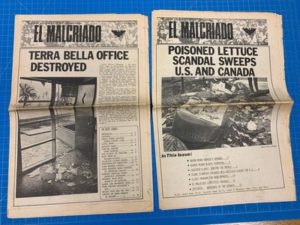This is the final week of my fellowship, and this will be my final blog post. I completed my presentation today and I’m proud to report that it went very well. The materials I laid out for the audience definitely garnered some interest, and the audience asked great questions. I was especially happy that Dr. Gabriele Carey came to my presentation. She taught my introductory archives course in Fall 2018 that processed the first half of the collection, so I thought she would appreciate learning that the collection had been fully processed.
On that note, I am equally glad to have learned from a member of the Special Collections staff that this collection is highly sought after. Many researchers at the Claremont Colleges have already expressed interest in perusing the collection. Moving forward, I am proud to know that the story of the UFW and the voices of people like Socorro Gomez-Potter and Yolanda Esquivel will be heard.
I want to thank the Claremont Center for Engagement with Primary Sources and Lisa Crane for giving me this wonderful opportunity. I learned a lot through this fellowship, and those skills will be valuable as I move forward. Thanks to the special collections staff at the Claremont Colleges library, who very graciously opened up the processing room early and closed it late on many occasions to accommodate my hectic schedule. I am very grateful.
Happy Holidays to you all, and I hope you all have a wonderful New Year.
-Sean

